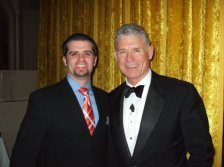 There is a developing movement within literature to chronicle an outsider’s perspective on the strange land of Evangelical Christianity. It seems that the world sees all Evangelical Christians as fervent, ignorant, and misguided by a holy book. Being an Evangelical myself, I can see how the outside world can group all Evangelicals into this stereotype. The media tends to pick up on the extremes of any group, ideology, or religion and usually tries gives us the most radical angle. You would think that I would NOT recommend books about non-Christians views on Christianity, but there are two books that are worthy of your consideration about strangers in a strange land that yield some surprising insights.
There is a developing movement within literature to chronicle an outsider’s perspective on the strange land of Evangelical Christianity. It seems that the world sees all Evangelical Christians as fervent, ignorant, and misguided by a holy book. Being an Evangelical myself, I can see how the outside world can group all Evangelicals into this stereotype. The media tends to pick up on the extremes of any group, ideology, or religion and usually tries gives us the most radical angle. You would think that I would NOT recommend books about non-Christians views on Christianity, but there are two books that are worthy of your consideration about strangers in a strange land that yield some surprising insights.
In the first book, A Jew Among the Evangelicals, by Mark Pinsky, he provides a brief introduction: a religion reporter for the Orlando Sentinel, uses his unique position as a Jew covering evangelical Christianity to help nonevangelicals understand the hopes, fears, and motivations of this growing subculture and breaks down some of the stereotypes that nonevangelicals have of evangelicals. “I hope you’ll find laughter, perhaps puzzlement, and heartfelt interest in how people just like you wrestle with feelings, values, and beliefs that touch the core of their beings. And I hope you’ll catch a glimpse of someone learning to understand and get along with folks whose convictions differ from his own,” Pinsky writes in the introduction.
The second book, The Unlikely Disciple is by Kevin Roose. Roose leaves his Ivy League setting to spend a semester at Liberty University, a conservative Christian college. The book gives this description: “His journey takes him from an evangelical hip-hop concert to choir practice at Falwell’s legendary Thomas Road Baptist Church. He experiments with prayer, participates in a spring break mission trip to Daytona Beach (where he learns to preach the gospel to partying coeds)… He meets pastors’ kids, closet doubters, Christian rebels, and conducts what would be the last print interview of Rev. Falwell’s life.”
Both of these books provide 3 things you should consider before judging Evangelical Christianity:




 For the last 20 or 25 years, it has become popular a church to build their worship and ministry space to look like a warehouse or storehouse (or use an actual warehouse). After being a part of three capital improvement projects at three different churches, I have found there is a whole theology to church buildings.
For the last 20 or 25 years, it has become popular a church to build their worship and ministry space to look like a warehouse or storehouse (or use an actual warehouse). After being a part of three capital improvement projects at three different churches, I have found there is a whole theology to church buildings. vention.
vention.

You must be logged in to post a comment.